Withernsea Long Sea Outfall – Part 2 (2021)
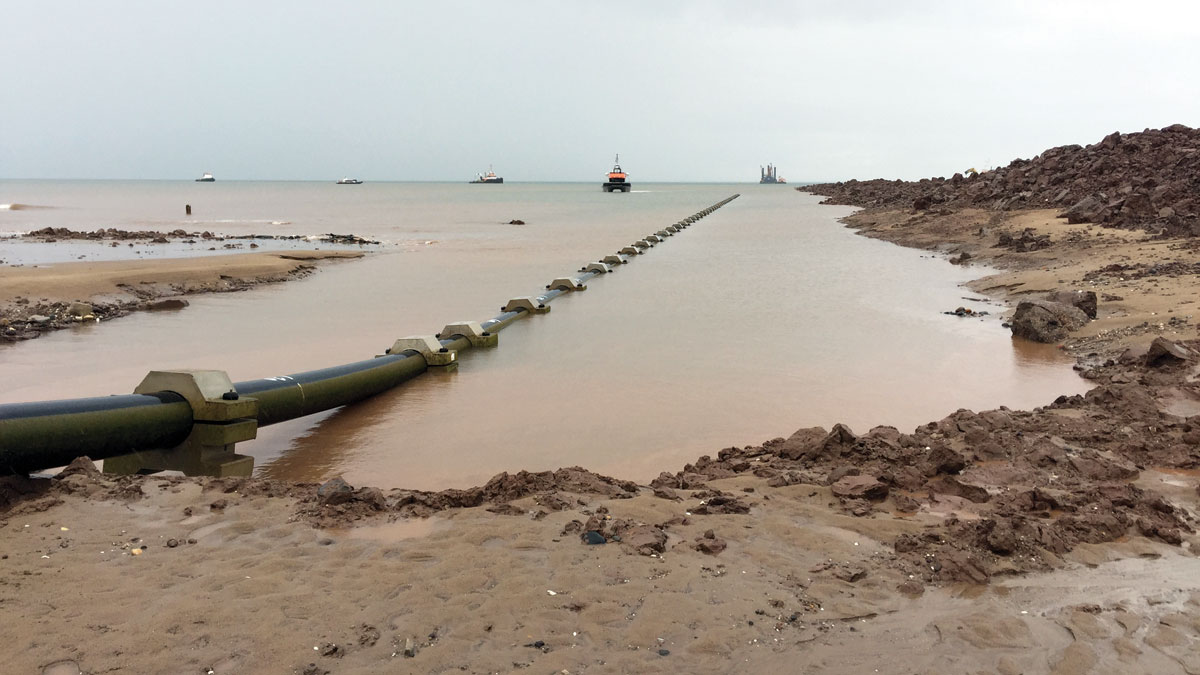
Outfall pipe installation - Completion of the second 500m string sinking procedure - Courtesy of Van Oord UK
August 2020 saw the successful completion of a new 3.5km outfall pipeline comprising of onshore (2.5km) and offshore (1km) sections on the Holderness Coast in Withernsea, East Riding of Yorkshire. Due to continued coastal erosion, the purpose of the project was to relocate the existing Withernsea WwTW further inland and replace the exposed existing long sea outfall pipe from the new works to a new discharge position in the North Sea whilst keeping the existing in operation.
Due to the challenges of the site location, the installation utilised a combination of onshore and offshore construction techniques including open cut trenching, deep shaft and microtunnelling from land to shore and offshore dredging where by the outfall pipe was installed within and backfilled using the float and flood method, requiring meticulous planning by a team of land and marine experts working on behalf of Yorkshire Water Services (YWS) to continue the company’s vital work to protect water quality of the seas and beaches of the Yorkshire Coast.
The construction was also carried out during the peak of the COVID-19 pandemic and required strict additional Health and Safety measures to ensure that the project construction site was COVID-secure throughout the construction period.
This paper focuses mainly on the marine design/construction elements of the project.
Background
Withernsea is located in Yorkshire, approximately 18 miles east of Hull on the Holderness Coast. The geographical location of Withernsea is surrounded by rapidly eroding coastlines due to the geology being mainly soft boulder clay. In 2011, monitoring surveys/investigations were carried out to analyse the increased erosion rates, determine future coastal erosion rates, as well as the potential impacts on the existing wastewater treatment works located at the top of the coastal cliff.
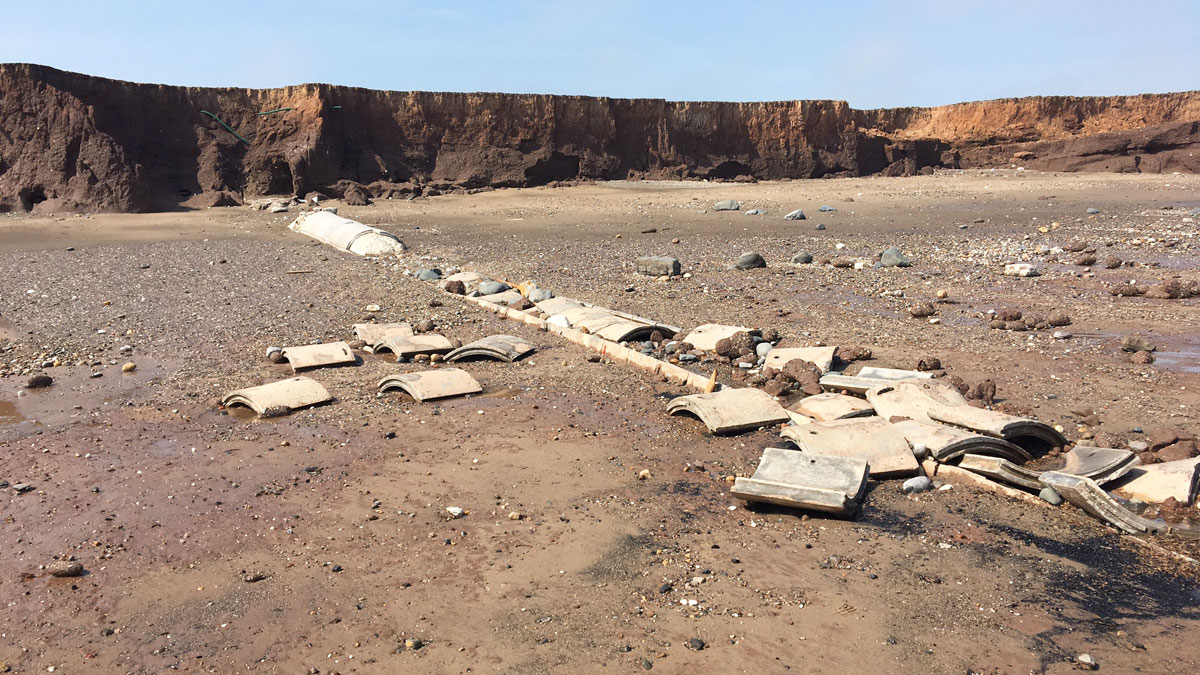
Existing (exposed) Withernsea long sea outfall pipe – Courtesy of Royal HaskoningDHV
The original design of the existing outfall took into consideration the predicted seabed changes and cliff erosion at the time. However, continuous storm events at the site location amplified the rates of erosion, putting the existing long sea outfall (LSO) and WwTW at risk of becoming inoperable by the year 2024 as opposed to year 2051 (asset life of 60 years).
Based on the predicted cliff erosion rates (7m a year) and exposure of the existing outfall on the foreshore, YWS had no choice but to relocate the existing WwTW and a potential site for a new WwTW was identified. A replacement outfall was required as part of the WwTW relocation scope to maintain the existing outfall discharges for the remaining life of the WwTW. Reuse of the existing LSO was investigated, however the remaining asset life was considered not to be suitable and therefore as well as a new relocated WwTW, at the new 60-year erosion prediction location, a replacement LSO was proposed.
Existing outfall
Constructed in October 1991, the existing outfall discharges treated effluent from the existing WwTW, located on Holmpton Road. The LSO comprised a 1140m long 457mm outer diameter steel (API 5L Grade B) pipeline with a concrete surround. The construction of the existing outfall was shown to be in a conventional trench on land from Chamber A, within a segmented concrete tunnel from the cliff to the foreshore and then in a buried trench to the offshore discharge point and diffuser. The seabed level at the existing discharge location was at approximately 14m water depth, with a discharge diffuser configuration of a single riser and 4 ports.
In 2017, investigative surveys revealed that the outfall concrete tunnel was exposed and damaged close to the base of the cliff edge and extending some 100m offshore in the inter tidal beach zone. YWS therefore made a decision that Withernsea WwTW would be relocated and a new LSO from the WwTW was also necessary. However, to prevent the potential pipe collapse of the existing outfall, and the subsequent high risk of causing an environmental pollution on the beach and immediate vicinity, temporary emergency protection works were designed by Royal HaskoningDHV and installed by YWS Framework Contractor Van Oord in order to protect the existing LSO until the construction of the new WwTW and new LSO was complete and commissioned.
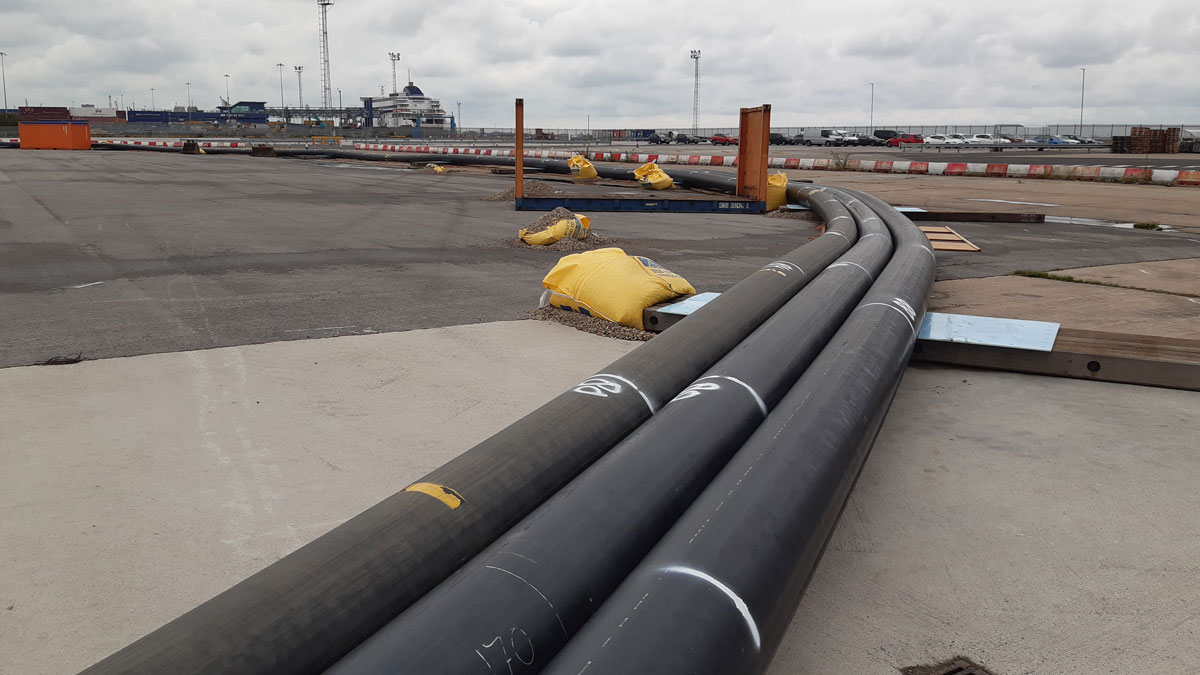
Pipe storage at Siemens Yard located at Alexandra Dock – Courtesy of Royal HaskoningDHV
Solution
The concept design phase was undertaken by Royal HaskoningDHV in 2016/2017. This considered and technically assessed a number of options including utilising the existing outfall with additional protection measures and full offline replacement. However, considering the impact of the ongoing and future coastal erosion predictions, it was determined that the preferred solution was to construct a replacement outfall pipeline from the new WwTW on land before extending offshore to a new discharge location, 50m parallel to the existing route. The outfall was proposed to be constructed off-line to allow existing discharges to continue prior to final connection to the new WwTW on land.
The relocation of the WwTW was in line with the predicted erosion rates, to safeguard the new LSO from future coastal erosion. A solution was developed to micro tunnel from the predicted 60-year erosion line, adopting the depth profile and alignment to be below the cliff toe and to emerge on the foreshore for connection to the offshore dredged section. In addition, for the offshore section, trench depths of greater than 3m was proposed to provide additional protection to the LSO from future seabed erosion.
To combat flotation, the design proposed that the new LSO pipe material would be of polyethylene and be stabilised using attached concrete weight collars to combat hydrodynamic forces and buoyancy affects within the trench prior to backfilling and also enable controlled installation by sinking.
Temporary/emergency protection works
Temporary protection measures including monitoring of the existing LSO were undertaken by Van Oord in order to protect it from being completely uncovered or undermined, and to also provide sufficient scour protection at the cliff and the foreshore for the short time period required i.e. 2- 5 years, prior to the construction and commissioning of the new LSO. This temporary protection measures involved the use of 72 rock bags, each 2.4m in diameter and 600mm in height and weighing 4 tonnes, laid in a honeycomb formation alongside and over the existing exposed section of the LSO on the foreshore for 120m from the toe of the cliff.
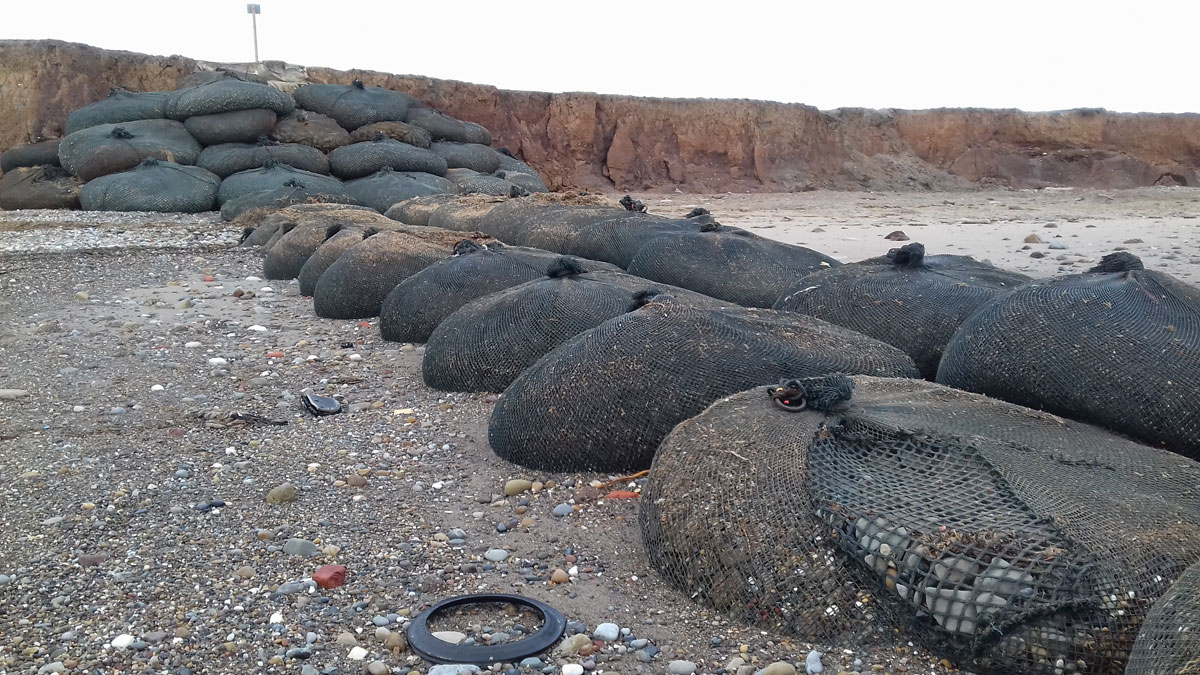
Temporary emergency protection works for existing LSO – Courtesy of Royal HaskoningDHV
For the cliff face, further erosion protection measures were implemented local to the LSO using 41 rock filter bags of the same size and weight as the foreshore protection. As part of the Marine Management Organisation (MMO) consenting requirements, an ongoing observation and maintenance programme was established to monitor the behaviour and impacts of the temporary protection works within its immediate vicinity and ensure that continuous protection is provided to the long sea outfall and at the cliff face in the short term (for up to 5 years).
Royal HaskoningDHV carried out the design of the protection measures, the construction consent application from the MMO and subsequent monitoring and reporting required by the MMO and the East Riding Council to make sure the new protection works did not compromise further coastal erosion along the coastline.
Constraints
The Withernsea outfall project is located in close proximity to a residential and farming area with limited space available for site compounds and storage. Access to the site was via a local village and residential roads which had width restrictions. There were also a number of overhead power lines in proximity to the route.
The existing cliffs at the site were liable to instability which was likely to be triggered by erosion at the base (particularly during storms) and by softening caused by heavy rainfall. The imposition of loadings at the crest of the cliffs was also a potential trigger of coastal landslides. Temporary access from the cliff was required for access onto the beach and inter tidal zone and therefore the design of the permanent and temporary works had to consider the risk of instability of the cliffs including measures such as load exclusion zones.
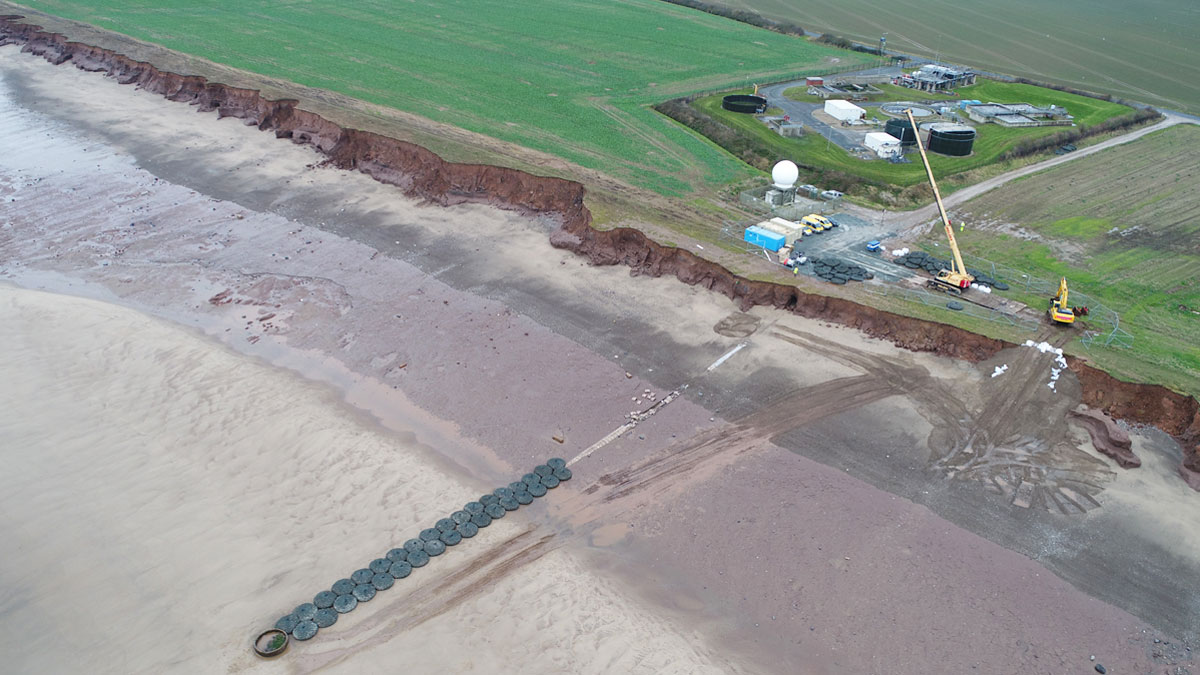
Aerial view of the temporary emergency protection works for existing LSO with the original Withernsea WwTW on the eroded clifftop – Courtesy of Royal HaskoningDHV
Although there were no designated Sites of Special Scientific Interest (SSSI) or Special Protection Areas (SPA) in direct proximity to the new proposed outfall, the potential impact from the construction works on the newly designated Holderness Inshore Marine Conservation Zone had to be considered. In addition, the works were undertaken with consent from the MMO. Royal HaskoningDHV liaised directly and provided the input required for the Construction Consent application from the MMO to allow the works to be constructed.
This application was expected to take a minimum of three months to approve and therefore an early application was sought and this was in place before contract award for the protection works could commence, saving Yorkshire Water Services time and reducing the risk of further damage to the LSO from future storm events.
Design progression
Following completion of the concept design and specification by Royal HaskoningDHV, a Ward & Burke Van Oord UK Joint Venture was appointed as principal contractor by Yorkshire Water Services to undertake the new LSO replacement works.
Van Oord UK, working with Mott MacDonald, produced a final design which involved the construction of a long sea outfall, land section, air release chamber, shaft and microtunelled section, offshore section and diffuser structure. Offshore stability and protection to the outfall pipeline were provided through the use of 150kg/metre length fixed weight concrete collars.
The design of the collars, in terms of its spacing and sizing, was optimised to provide consistent ballasting throughout the length of the pipeline assembly, enabling practical installation and ensuring long term pipe stability under all design conditions. It was determined that the pipeline assembly would be towed out and sunk into position with all concrete collars pre-installed.
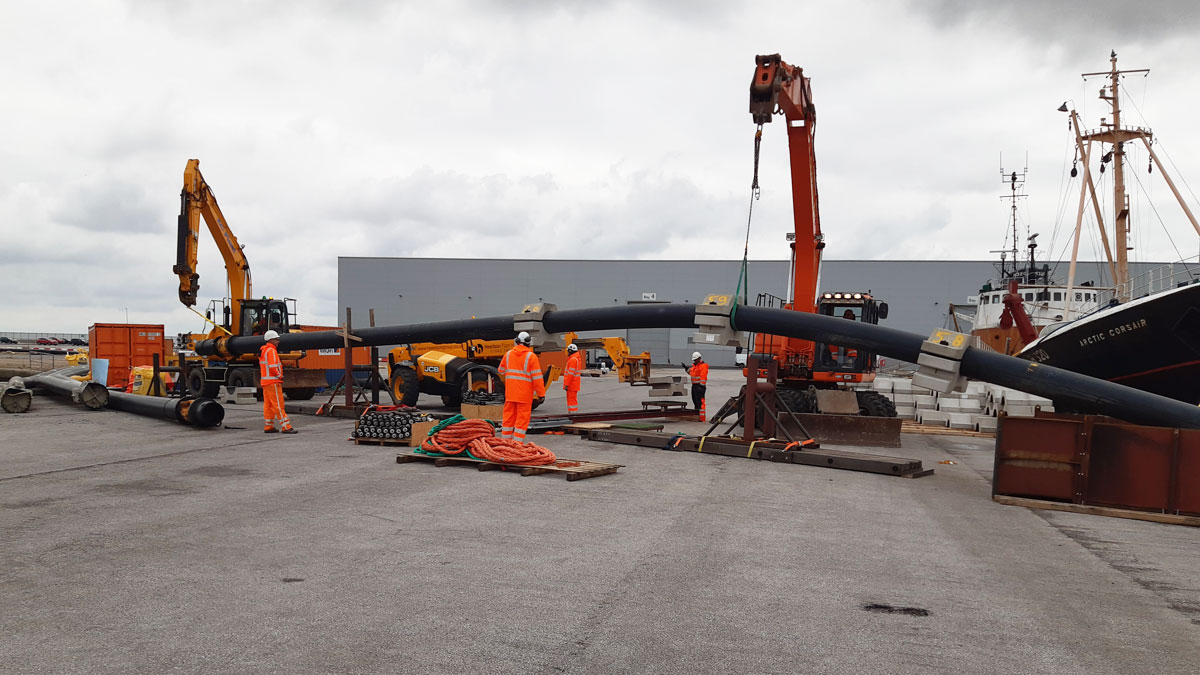
Collaring at Siemens Yard (Alexandra Dock) – Courtesy of Royal HaskoningDHV
Withernsea LSO: Supply chain – key participants
- Client: Yorkshire Water
- Principal contractor (offshore works): Van Oord
- Principal contractor (onshore works): Ward & Burke
- Concept design & supervision: Royal HaskoningDHV
- Detailed design: Mott MacDonald
- Technical documentation: 3rd Light Media
- Pipe supplier: Pipelife Norge AS
- Concrete pipes: Tracey Concrete
- Diffuser duckbill valves: MeasurIT Technologies
- Tunnel boring machine: Herrenknecht International
Marine works
A total length of 1000m of polyethylene pipe (450mm OD SDR 17 PE100) was manufactured by Pipelife Norge AS, in lengths of 250m which were then towed from Norway by sea to Siemens Yard located at Alexandra Dock of Green Port in Hull on the River Humber, for preparation and assembly. The pipe strings were pulled onshore individually with the aid of an excavator and small marine tug boat from the quayside (inner dock) area into the working area on the Siemens Yard, where an assembly station was created for the fitting of concrete collars and flanges.
Excavation was carried out using land-based excavators on the beach/intertidal section and Van Oord’s backhoe dredger ‘Razende Bol’ for the marine trench. A minimum cover of 3m above the crown of the pipe was required for the outfall pipeline through its entire route. The excavated trench material was cast adjacent to the trench on the south side for reuse as backfill material upon completion of installation.
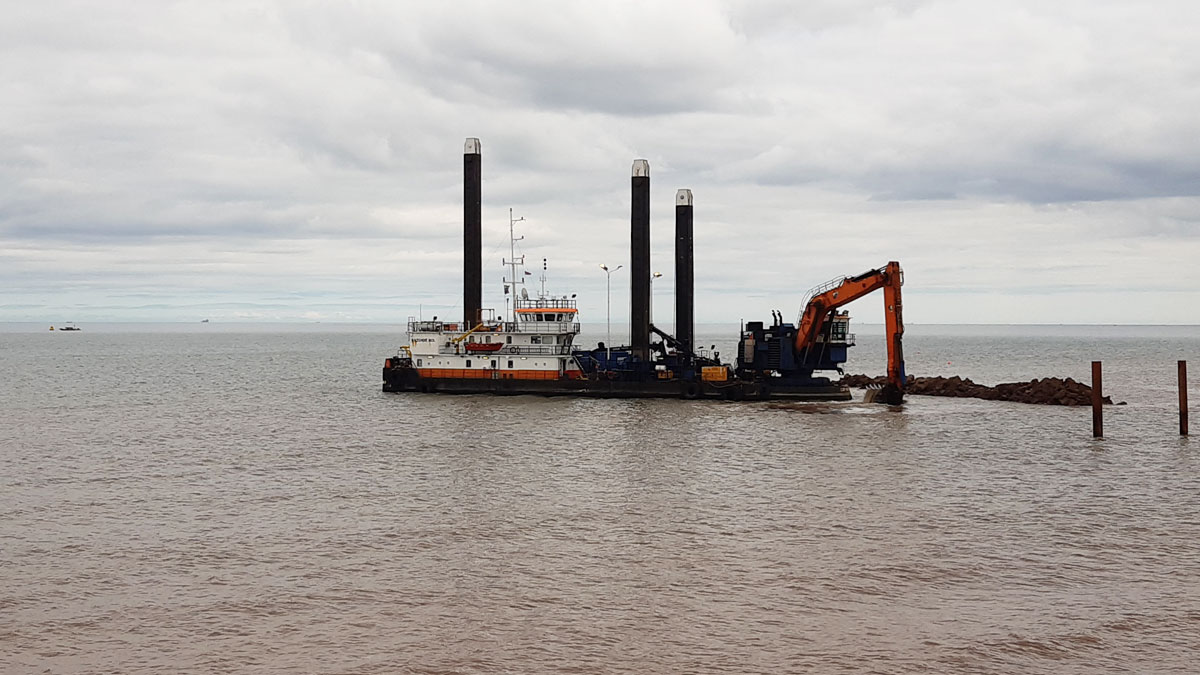
Backhoe dredger during offshore dredging process – Courtesy of Royal HaskoningDHV
Installation
After pipe preparations were completed at the Siemens Yard located at Alexandra Dock, the pipes were towed in separate sections from to Bulls Anchorage for temporary storage. At Bulls Anchorage, the four 250m pipe sections were welded together to form two 500m long pipe strings and towed to the Withernsea site for installation after the welding process.
The polyethylene pipelines were installed using the float and flood method in 500m sections. The installation started from the offshore end, where the first pipe section (with diffuser bend) was positioned by means of the backhoe dredger, a Multicat and other support tug vessels. After the diffuser bend was successfully installed, the rest of the 500m long pipe string was sunk to the seabed by pumping seawater in a controlled manner into the pipe.
The controlled pumping of seawater into the offshore pipe end, initiated the sinking process which caused the pipe to form an S-curve of approximately 20m long between the seabed and seawater surface. As a contingency measure and to ensure the installation process was well controlled, a foam pig was pre-installed in order to create a seal between the pipe section filled with air and the section filled with water, in case the pipe had to be re-floated due to inclement weather.
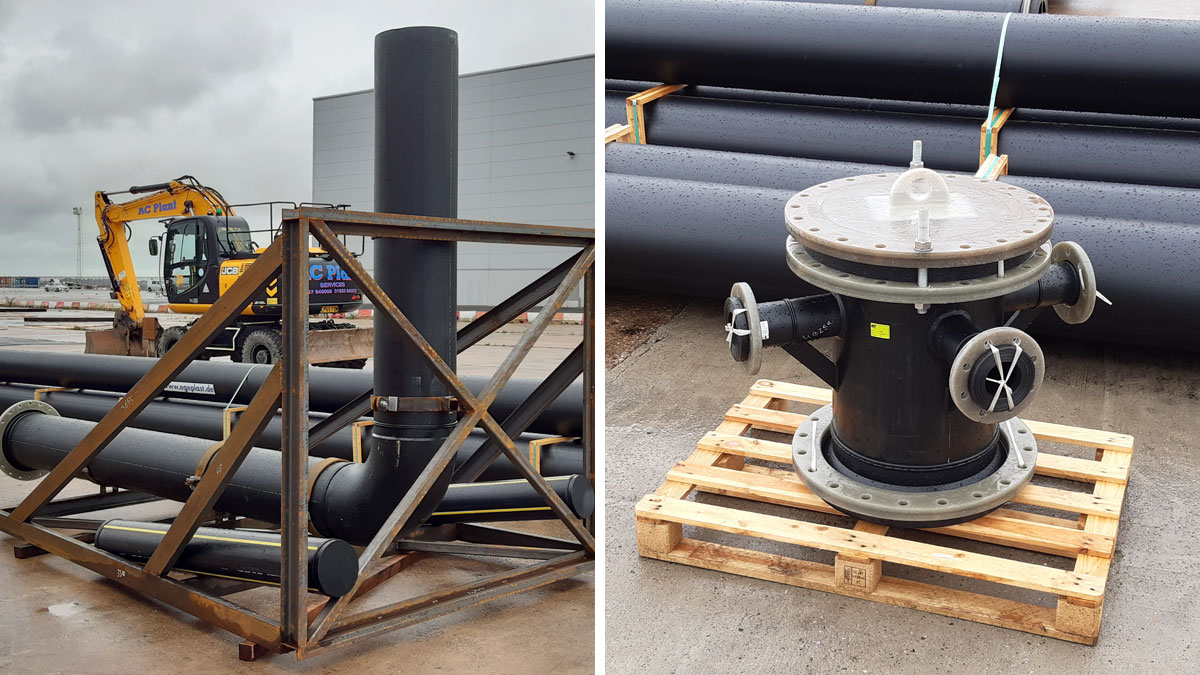
Diffuser bend/riser and (inset) four-port diffuser head – Courtesy of Royal HaskoningDHV
When the installation of the first pipe section was almost complete, the second pipe section was towed and pulled into position by an onshore winch and connected to the end of the first pipe section by a flange-to-flange joint. A bend restrictor to prevent over-bending at the flange-to-flange interface was also installed. Once the pipe sections were completely installed in the trench, the profile was checked by a multi-beam survey (target installation of +/- 3m horizontal, +0m/-0.5m vertical) to verify the final pipe position.
Post pipe installation, the foam pig was removed from the pipe. A pressure test was performed in accordance with the procedure set out in IGN 4-01-03, to 1.5 times the maximum internal working pressure.
Once the outfall pipeline had been sunk to the sea bottom and tested the diffuser head was installed from the backhoe dredger platform by divers. The diffuser head comprised a flanged PE pipe, fittings and a single riser with a four-port crosshead, each a nominal 110mm outside diameter, allowing for Tideflex check valves to be fitted directly. Included as part of the diffuser installation, was a removable access flange at the top of the riser to enable access inside the riser pipe for future maintenance.
Rock armour protection was further provided extending approximately 9m around the diffuser from its centre to protect the area around the diffuser from scour. Also provided was a fabricated mild steel protection frame to the diffuser, fitted with sacrificial anodes to allow a 50 year design life for protection from dropped objects, anchors, trawlers and fishing nets.
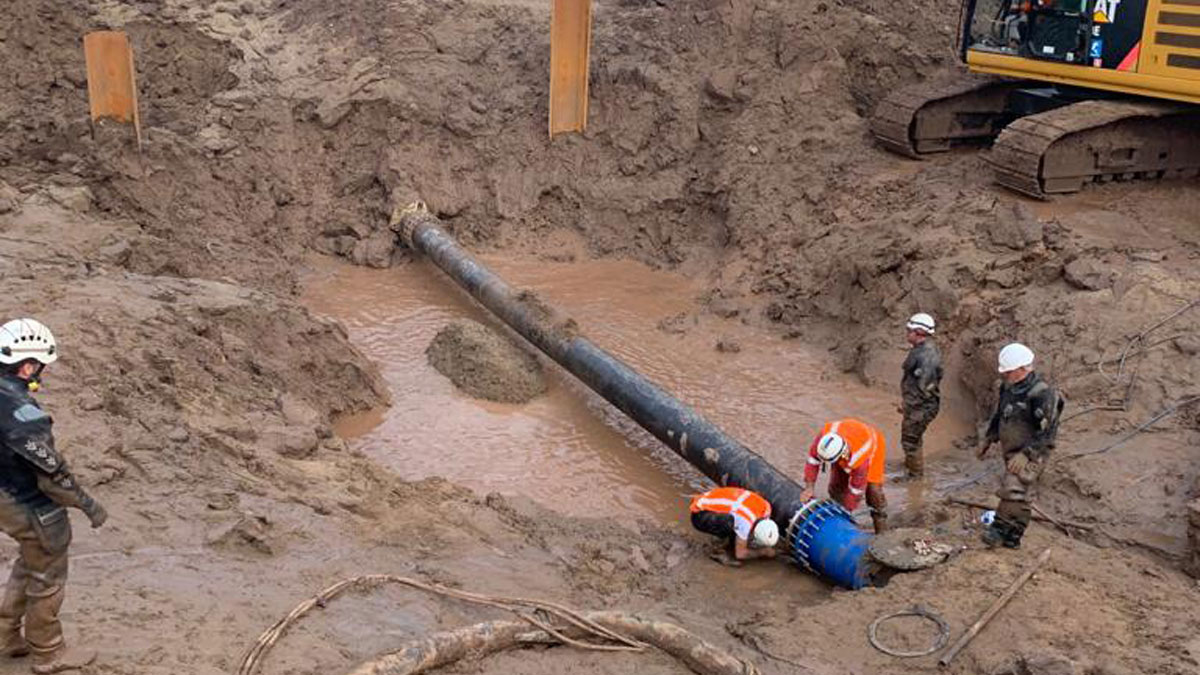
Spool piece connection between tunnel and LSO section in intertidal zone on beach – Courtesy of Van Oord UK
Spool piece connection
The final part of the offshore installation involved the connection of the installed LSO pipe section to the microtunneled section. A temporary sheet pile cofferdam was installed on the beach in the inter tidal zone to provide a safe working environment between the tunnel exit and offshore pipe section of the pipeline. A steel bulkhead plate was welded onto the tunnel section. The LSO was then connected via an accurately measured length of polyethylene pipe, using a flange-to-flange connection. These final operations had to be performed within a short time frame, within the low water tidal range.
Throughout the construction process Royal HaskoningDHV assisted Yorkshire Water Services by providing contractor checks, reviews and approvals of design submissions, temporary works, health and safety procedures, method statements, on site supervision, surveys and commissioning.
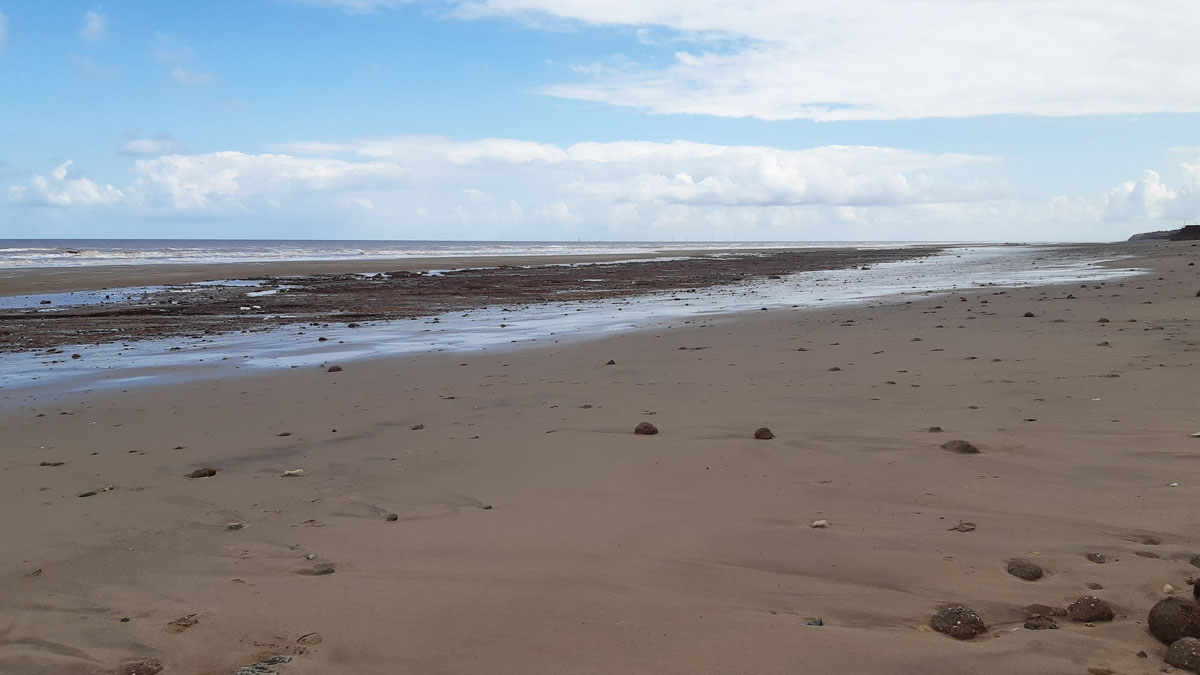
Withernsea Beach after completion of work – Courtesy of Royal HaskoningDHV
Conclusions
The successful completion of this project will allow treated effluent to be safely discharged from the new Withernsea WwTW located at a safe distance from the eroding cliffs and continue to provide water quality benefits to the Yorkshire coast.








